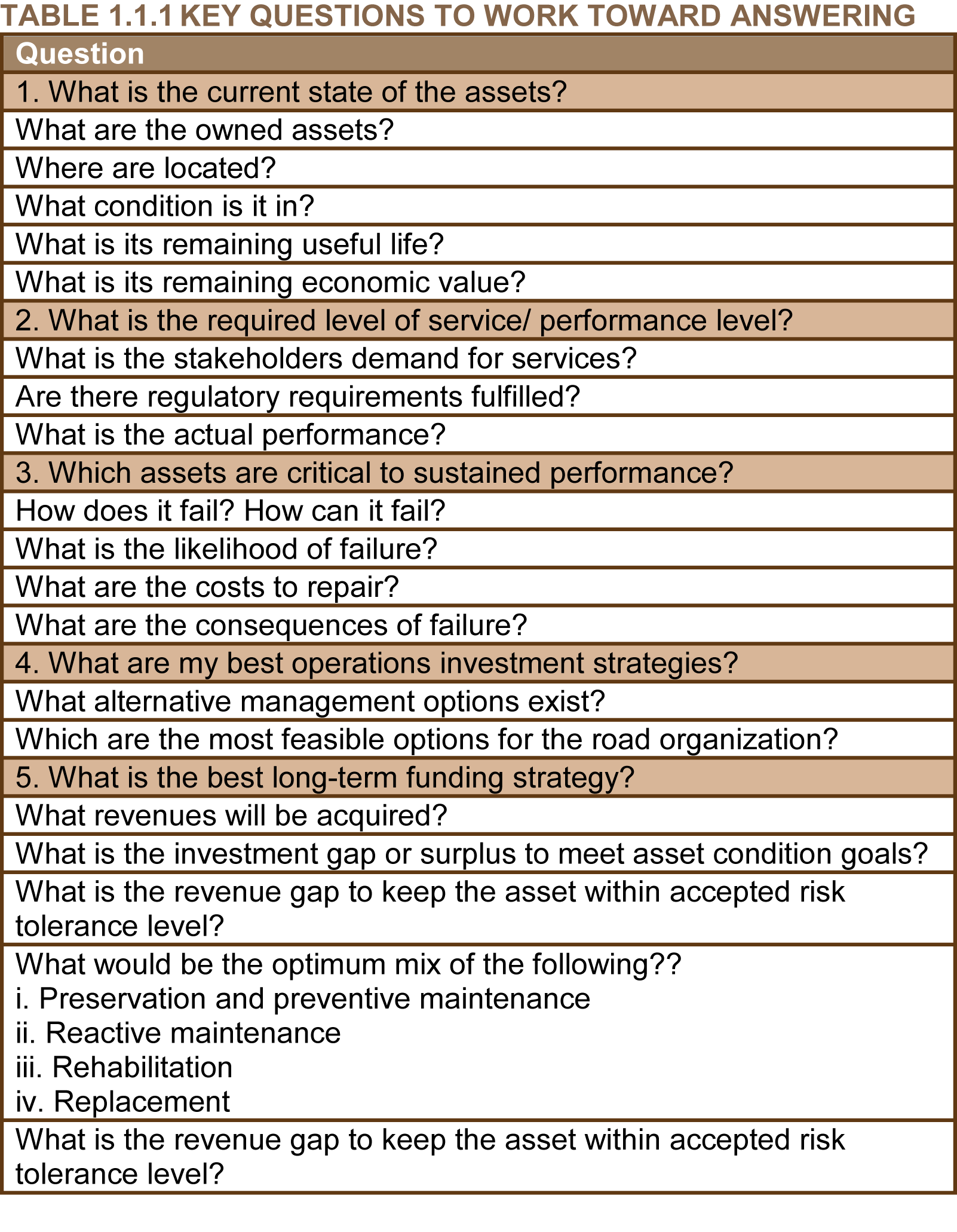
Asset Management Manual
A guide for practitioners!

Asset Management Manual
A guide for practitioners!
Road organizations are facing many of the same challenges and could benefit from the adoption of asset management principles. These challenges include increased demand from stakeholders, reduced budgets and greater challenges to deliver value for money and transparent and auditable processes for investment. However, many organizations lack the resources and/or experience to initiate and grow an asset management program. Therefore, PIARC has developed this manual to support road organizations in their implementation of asset management
There are many factors influencing the way road organizations make decisions about managing their road assets. The traditional way of doing business, which postpones repair activities until major deterioration occurs, is no longer sustainable. It is too expensive and it erodes the value of these important assets. As the costs of operating and repairing roads continue to increase and available funding decreases, it has become more difficult for governments to meet the demands of an aging infrastructure while dealing with public expectations to provide the same level of service for less money. The public also demands transparency and accountability from road organizations, requiring justification for decisions and responsibility taken for results. The typical way of doing business, which frequently relied on repairing the worst roads first after extensive deterioration has occurred, does not work. It is an expensive and ineffective way of maintaining road assets. It allows road to depreciate, resulting in a loss of asset value as well as asset conditions far below those expected by the traveling public. Therefore, in today’s economic environment, organizations need to approach the management of road assets differently than in the past. There can be substantial consequences associated with continuing to manage assets ineffectively, including not providing safe and efficient movement of people and goods, all of which will ultimately cost the public more.
No matter the size of the road organization, the size of the road network, or the maturity of the road organization with regard to data, analysis and tools available, an asset management framework will support a road organization in effectively managing its assets. Asset management is sometimes confused with pavement management and bridge management computer systems. It needs to be stressed that asset management is not a computer program, nor is it a rigid protocol. It is a set of business processes for decision making that encourages continuous improvement in infrastructure management. Asset management provides to road organization a framework to communicate its approach to its workforce, to external stakeholders including politicians, to the media, to its external partners and to the public. Asset management is a framework leading to improved management of infrastructure assets and improved decision making based upon quality information and decision making.
This manual will focus on various levels of a road organizations maturity in undertaking the activities that comprise the asset management framework. The levels of maturity focus on the following:
